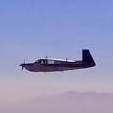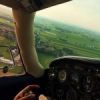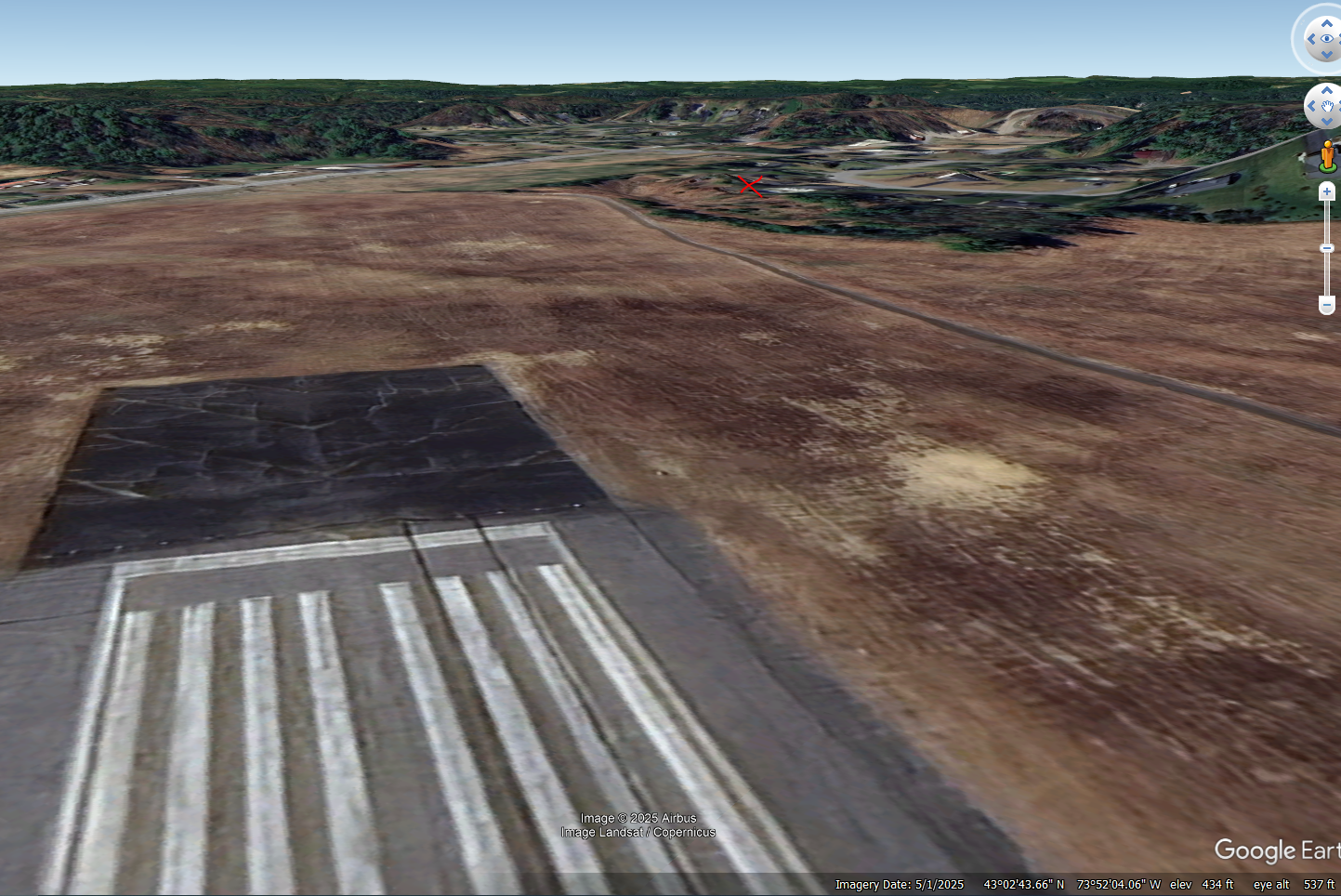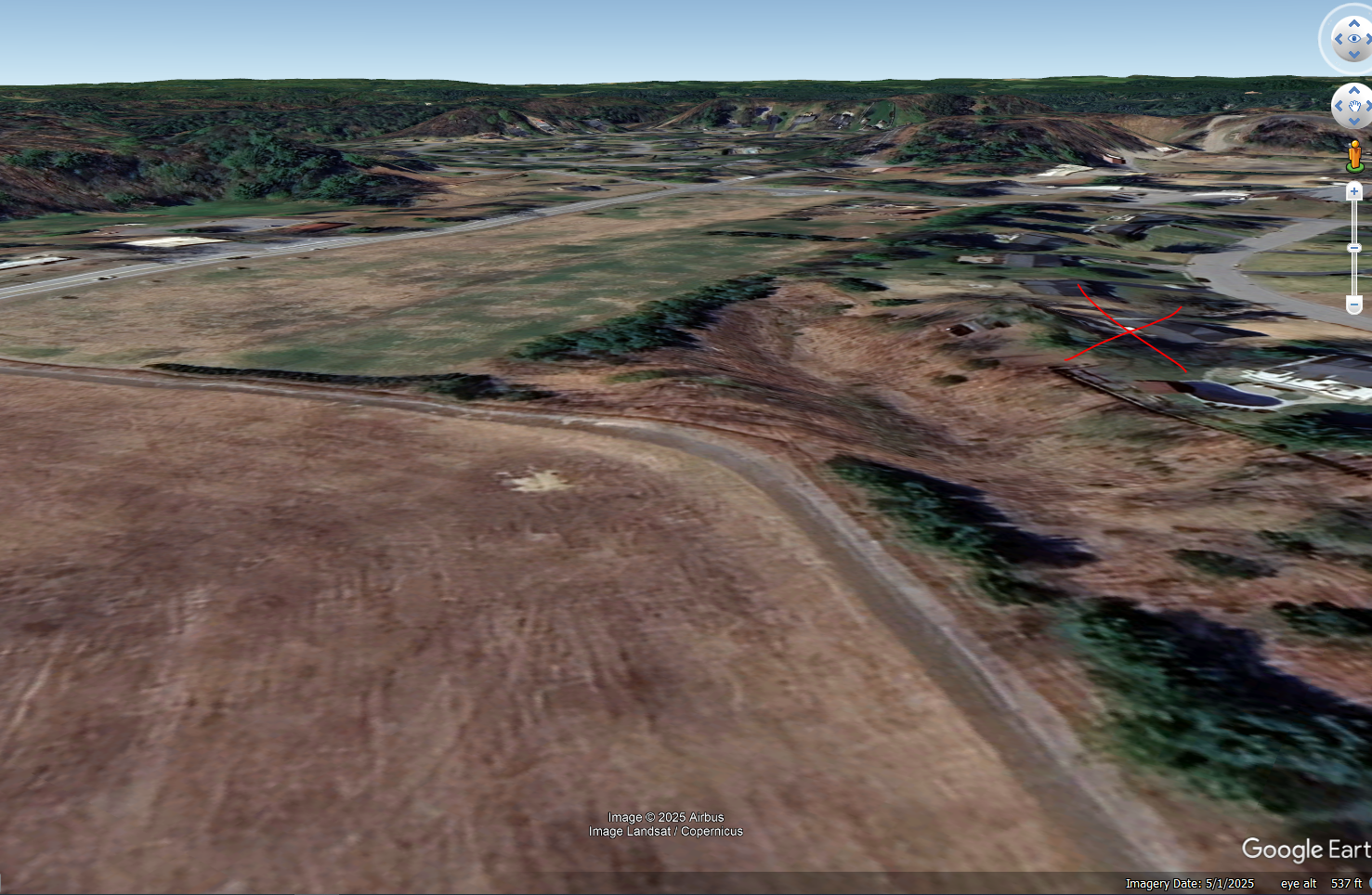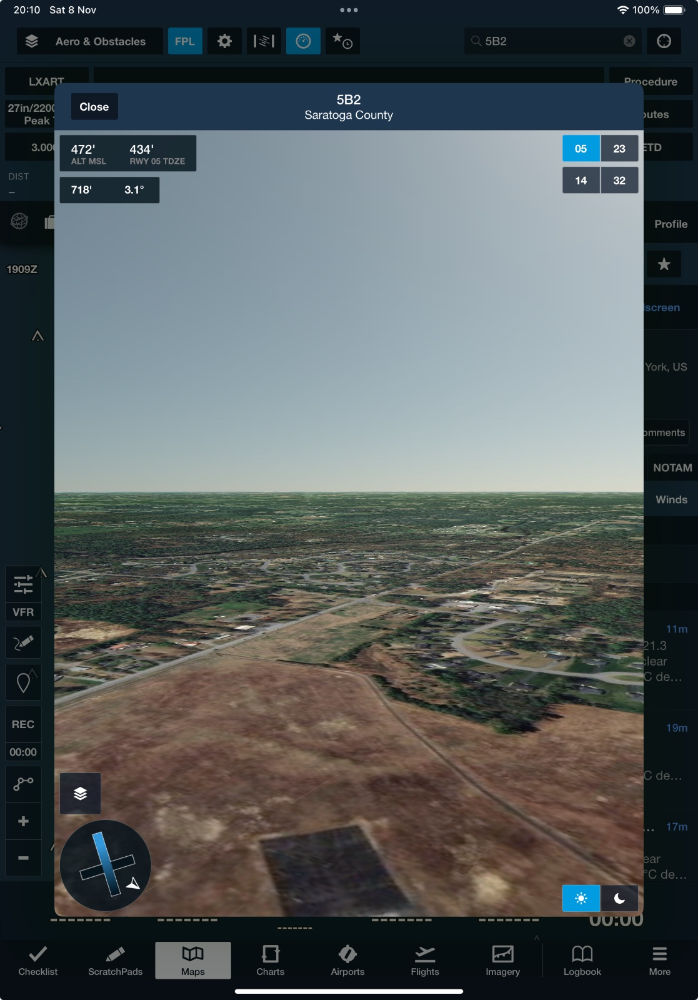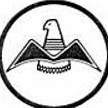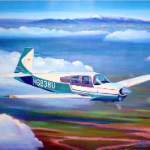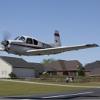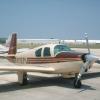Leaderboard
Popular Content
Showing content with the highest reputation on 11/08/2025 in all areas
-
I obviously don't know what caused this accident, but it does sound like fuel starvation. I had similar engine issues that started about 20 years after I purchased N1310W. I experienced 3 incidents where I suddenly lost engine power, only to return a few minutes later. Those incidents were spaced several months apart over about 3 years. During that period, I tried to troubleshoot the issue, including injector cleaning and an overhaul of the fuel injector system. I never did find the cause of the power loss, but hoped that the steps taken had eliminated the issue. Difficult to tell, especially since the problem occurred once every 6-12 months. The 4th occurrence in July 2012 resulted in an off-field landing, with damage that totaled N1310W. https://www.bing.com/ck/a?!&&p=da0b1baa577a20b3619c1bbb6d80cdcd90f5c06aa938d080087b90bd8ddc3410JmltdHM9MTc2MjU2MDAwMA&ptn=3&ver=2&hsh=4&fclid=10042cb7-72d6-62cd-192b-3a8373dd6330&psq=n1310w&u=a1aHR0cHM6Ly9kYXRhLm50c2IuZ292L2Nhcm9sLXJlcGdlbi9hcGkvQXZpYXRpb24vUmVwb3J0TWFpbi9HZW5lcmF0ZU5ld2VzdFJlcG9ydC84NDQwMC9wZGY The NTSB found "loss of engine power during cruise flight due to a malfunction of the fuel injection servo due to a damaged O-ring". The O-ring fragment found in the mixture control lever assembly was only found after I asked the NTSB to send the system to a shop for teardown. Otherwise, the investigation would not have discovered the cause of the fuel starvation. I reviewed all maintenance logs since manufacture, and suspect that the O-ring was original to the aircraft. It was likely pinched when initially installed. After decades a fragment that had broken loose floated around and blocked fuel flow intermittently.6 points
-
This is the kind of situation where you should take the discrepancy list, separate out the non-airworthiness items and prioritize and group them because, as pointed out above, there are options and you need a roadmap for upgrades so your decisions work together. It's deceptively easy to piecemeal it and find out that the thing you bought last year won't work with the thing you want to buy this year. If you are willing to say what year and model airplane you have and publish the discrepancy list, I'm sure you will get lots of advice from the forum. Personally, I would ask the maintainer to explain each item and how they determined it needs to be done. For example, gear pucks have a specification in the maintenance manual and may well need to be replaced, but the shop should be able to tell you what they measured compared to the spec.5 points
-
I had some significant problems with my airplane when I first got it, which included three separate occassions of power loss, and I was extremely fortunate that in all three I was able to put it on an airport without damaging anything. In my case the issues were confounded a bit because we had a known issue with water contamination which seemed to include trapped water coming out and getting ingested at inopportune times, as well as a fuel servo which had been subject to unknown contamination and was "full of grit" according to the shop that ultimately overhauled it. So the first power failure, which was a complete loss of power on takeoff, we *think* was due to water, but because of the later issues that turned out to be the fuel servo, may have been because of the fuel servo. When I rolled off the end of the runway onto the taxiway the engine was idling, so it had restarted somewhere between when I pulled the throttle back to make the runway and when I rolled off the end. That seemed to support the water ingestion theory, but servo failures due to contamination can be intermittent as well, so who knows. The second failure was a clogged injector, also on takeoff, which on a four cylinder takes about half the power away. In that case I still had about 100 ft/min climb, so I felt my way around the pattern pretty low, did an actual short approach and got it back on the airport. The finger filter in the servo was completely full of junk, and when we cleaned that and the failed injector things seemed to be back to normal. It was an indicator that was, or at least had been, contamination in the fuel system. By then we thought we had all the water out, and couldn't find any signs of contamination anywhere else, so I kept flying it. The third failure was another total power loss, but we were, very, very fortunately, already within glide range of our destination, so we landed there. Again, it was idling when we landed, but wouldn't make any more power than a little above idle, basically barely enough to taxi. The mechanic on that field had heard us taxi in and my attempts to get it to make power, and had already diagnosed it by the noises it was making as the fuel servo. He's a really good mechanic, and he was right. The servo got sent off for overhaul and I've put essentially a thousand hours on it since with no more similar trouble. On every one of those flights there were no indications of trouble during startup, taxi, or runup, or even the takeoff roll or the climbout right up until the actual failure. In this case the fire probably erased any hope of finding out the actual problem. Because of the symptoms and the similarity to the issues I had, I suspect there was a problem in the servo that was intermittent, maybe due to some particulate contamination that got into the diaphragms and needle valves. FWIW, contamination can get inside the servo via the ram air tubes that protrude into the throttle body. On most airplanes the air that goes in there is always filtered unless the mechanical bypass opens, but on Mooneys with the ram air door the filter can be bypassed by opening the ram air door. If this happens with dust or other contamination in the air, that contamination get into the servo, and basically has no way to get back out. This is one of the reasons that I recommend that people with J models with ram air doors that are so inclined should delete the ram air door and cover it over, and there's a kit from Mooney and an SB to do this. On other models, just be very careful to not open the ram air door until you're in clean air (although you can't ever really be sure), and remember to close it before you descend or enter rain or the potential for dust/bugs/whatever. So there's no way to know for sure what happened in this case, because it really could have been a few different things, and any evidence in my personal prime suspect, the fuel servo, was probably destroyed in the fire. All we can do is be careful, pay attention to the filters during service and annual inspections, sump for contamination and water, do thorough runups, and pay attention to misbehaviors that may be indicating deeper problems. I raced cars regularly for twenty years and never lost a friend or even an acquaintance. We had some injuries, myself included, but never lost anybody. I've been back to aviation for about nine years and have already lost a number of acquaintances, and I include this as one of them. Risk in GA is higher than we sometimes care to admit, so it's really important to stay diligent and pay attention.4 points
-
I wish they hadn't tried to turn back to the airport so low and just looked ahead for a spot. I wonder whether that would have mattered.4 points
-
One thing not discussed here is the fact that most pilots put almost complete trust in their mechanics/A&P/IA's. This plane was in the hands of a mechanic from Oct 10-21 according the "Right out of the gate" topic. The mechanic conducted the test flight after repair looping the airport at least 4 times and @LANCECASPER congratulated him on the outcome. Most Mooney owners don't join or frequent MooneySpace. The owners that post here are generally way, way up the scale on knowledge of their aircraft and their skill level for diagnosing and repair. I wager that the average Mooney owner has basic knowledge of their planes but have to take the word of their mechanic for most things. Some are quick to say that Baber should have walked away from the plane or that he should have sprung for $thousands on overhaul and repair of entire systems. I bet many have experienced engine power reduction or stoppages only to trust their mechanic it has been repaired and fly on. @neilpilot above says that he had three (3) engine reduction/stoppages, yet they never figured out what caused it and he continued to fly based on his trust in his mechanics. He didn't park the plane. The fourth occurrence did cause an off-field landing that he survived. Had it been on take off, the outcome might have not been survivable. The point is that flying is inherently dangerous. We are flying planes that are generally 20-60 years old. These Mooney's have generally seen many owners and mechanics. Not every problem and repair has been documented over time. A small thing like @neilpilot's fragment of an o'ring can bring your plane down. Even brand-new Mooney's crash due to undetermined equipment failure like M20V Acclaim Ultra, N576CM, in 2019. This is a very sad outcome for an enthusiastic pilot/owner. We can second guess the measures Baber took but I wager that most of us would have handled it the same way. We take risks every time we fly - equipment, weather and personal performance. We try to mitigate risks but we have to trust someone.3 points
-
Since the McSpadden death I sort of have made it my mission to look for this mistake and point it out every time it happens and harp on the fact that turning back is basically never the best option. Remember my posts in that thread about the power off 180s demonstrated by the youtube pilot with the Acclaim?: New “impossible turn” video - Acclaim S It's not an impossible turn. It's just a "very likely to kill you if you try it" turn. And the irony of this example is that he needed to have a instructor with him. And maybe I shouldn't judge a person who has survived a crash and another person died as a result of their actions, and I will definitely look as an asshole for what I'm about to post, but this CFI likely killed the owner. How can you start a turn back without even noticing how low you are and only doing so once in a bank dodging houses? Why the automatic reflex to turn back at all? Another failure of our community, blind leading the blind, and no standards adopted that are objectively safest. I bet I will get responses to this very comment by someone more experienced than me (and therefore presumably a higher authority, right?) saying how wrong I am. It seems like every pilot, especially once with the rating of a CFI is just an artist, who just gets to impart knowledge on to others without any real authority, doing it their own way, teaching their "techniques". What a load of bullshit we have in this business. In this story they had no business turning back at all. I checked! Look, the view they had in front of them (crash where the red X is roughly): Further along their flightpath: Why not go straight? Why not be prepared to go straight? Foreflight has this feature, I don't know if people know this, but you get to look at the 3D view of the airport with one click, so easy to do even just when holding short (something I do every single time): If anyone ever, this pilot, and especially this CFI, should have been briefed on what to do if the engine fails. Judging from where they ended up, it seem like going straight could have worked for both to survive. There was enough of a nice clearing right there just in front of them. A couple of S turns with full flaps should have made it possible to set it down there. But no, the CFI the insurance company demanded reflexively turned back only to see he's about to hit a house. And this damn idea to turn back just refuses to die. Thanks to all the youtubers making videos about the "impossible" turn, despite the many craters it creates, it just keeps on taking and it seems to me it has claimed another victim. This pisses me off to no end. /rant-off2 points
-
I’m on the phone with Verizon right now (there goes my Saturday) I think they finally understand the problem. Hopefully we can get this resolved. Funny thing, while talking to the AI phone bot who just told me there was a 938 minute wait to talk to a representative, I cussed it out with some very colorful language. It immediately connected me with a human. That has never happened before.2 points
-
I'm curious if there are any SOPs to guide exactly how far to go with such inspection and decontamination in Mr. Baber's fuel system contamination scenario. One adds some risk with all invasive maintenance, particularly that performed without a clear diagnosis up front, which may more than offset likelihood any safety dividend of an intervention not directed at a clearly identified problem in a component. I admittedly know little about these fuel injection systems, which my plane lacks, and so my comment may be completely off the mark in this particular case. However, if there is a more rational, systematic process for dealing with Fred Baber's fuel system contamination issue than what he did, it's certainly worth highlighting here so that others can learn from this tragedy.2 points
-
To clarify, I congratulated him on the progress that was being made not the outcome. I said, “Congrats! That looks a lot better than last time”. It was obvious by this point in the thread that he was determined to get this airplane flying one way or another. From the start, and more than once, I strongly encouraged him not to accept the airplane after what happened on the hand-off flight.2 points
-
We can guess, but it’s not known for sure that fuel contamination or even the fuel system in general, was responsible for this engine’s recurring power loss issue. Unfortunately, the previous statement was also true prior to the fateful flight. I think it’s important to recognize that the diagnosis of a malfunction associated with critical system must be holistic. If part of the fuel system is found to be contaminated, then the whole system needs to be inspected and decontaminated. AvStar will overhaul an RSA5A1D fuel servo for under $2K. One can never be absolutely, 100%, sure that everything is functioning exactly as it should but…and I say this reverence for the loss associated with this crash…there could have and should have been a much deeper dive into troubleshooting the malfunctioning powerplant2 points
-
Let's be clear I was expecting damage. Was thinking something in the 15k range. But I won't be taking it anywhere else. I love this shop and I'm being treated with respect and from what I can tell fairly. I knew what I was getting into. However, I am seeking feedback and getting quality advice on how to mitigate or spread out some damage.2 points
-
I just bought a 79 J and had a pre-buy done, and the seller paid around $19k and I put in about $8k (which included paying for the pre-buy, the annual, and about $2000 in extra non-airworthy work). All pucks were replaced. I think what you have there is about normal. We have found some other items, including a bit of rework from the original annual. So far, nothing major. You know what? I still flippin' love this airplane! I hope you love yours as well.2 points
-
In the 9 years of owning my Mooney, I’ve only had one annual that was not owner assist. That one and only time was at a premier Mooney service center. The aircraft was there 10 weeks and my post annual inspection revealed; 9 quarts of oil in an 8 quart IO 360, non functional toe brakes as the brake system had not been properly bled, pilots window hinges installed backwards, a Craftsman 9/16 wrench on the engine and two missing inspection plates from the bottom of the wings. With that said, I don’t have a specific post-annual checklist as I only do owner assist. However, from my experience, I believe it’s critical that you go beyond a normal preflight, as others have pointed out, and look it over THROUGHLY.2 points
-
On a J it's an easy mod that has almost no affect on performance, and there's a factory Service Bulletin and kit to do the mod, i.e., it's an approved alteration. It has a bigger affect on performance on the earlier models and doesn't have any factory data for the alteration.1 point
-
Your experience tends to support that my issue in 2015 was also the fuel servo. No power downwind even with full throttle but we were idling at the very end of the 5000 foot runway and were able to taxi back to the hangar (which made no sense at the time). Why focus on J's? Why not seal the F ram air door too? I check mine every flight. Sometimes it'll look like it's cracked open a few degrees; may need to be adjusted.1 point
-
That would indeed be interesting. Just for comparison, I made some measurements at the tail of my 1994 M20J some time ago: With takeoff trim, the elevator is aligned with the stabilizer. With full down trim, the elevator is deflected down ten degrees and the fin rotates back 4 deg measured at the leading edge With full up trim, the elevator is deflected up ten degrees and the fin rotates forward 2 deg measured at the leading edge The gap between the tailcone and the empennage measured at the bottom below the hinge is: 4.5" - takeoff trim 3.5" - full down trim 5.25" - Full up trim1 point
-
@unicom I am traveling, have not read that section of the manual in several years, and cannot answer your question. I am sure one of our more knowledgeable members can answer. I can say that my 1977 tail looks like the second picture posted by @DC_Brasil Mine does not look like yours with the indicator in the takeoff position When we rebuilt my jack screw I had that section of the manual marked, opened, and ready for the IA to discuss. We also made 3 reference marks on the tail feathers with magic marker on a piece of tape. One full up, one full down, and one at my normal takeoff position. Everything lined up after repairs, the indicator was in the right position, and I had confidence that it was done right.1 point
-
The front trim gearbox where the trim wheel is attached drives a leadscrew that turns the torque tube that runs to the jackscrew in the tail. This leadscrew has the up and down limit stops attached to it and the trim indicator is driven by a Bowden cable that attaches to a nut located on the leadscrew between the stops. Thus, the trim indicator indicates the position of the nut between the two stops. It is possible to adjust the cable length to the indicator at this nut. If the trim torque tube is disconnected from the aft jackscrew and rotated before reconnecting, the stops and trim indicator will no longer agree with the correct incidence of the tail. If things are way out of whack, I suppose the tail itself would impose limits on trim movement since the hinge at the bottom can only extend so far and the jackscrew itself will have limits of fore/aft movement. The picture appears to show nearly full nose down trim and I'm surprised that if this did indeed correspond to a takeoff trim setting that that there would be enough movement left in the system to move the trim to both stops, but I'm not doubting you since I've never tried it.1 point
-
There likely is. I just did some pretty big work on my 18 year old engine that suffered from an intake leak a few months ago. It turns out the 12 year TBO is there for a reason and various rubber and other synthetic items, from hoses, to o rings, to gaskets just don't last that long. All my gaskets were near the end, if not already destroyed. We found a pretty badly worn fuel selector o ring that was replaced, some oil was leaking mildly in various places from stiff rubber hoses. And with this accident I'm thinking perhaps I didn't do enough and I should replace all the diaphragms in the fuel injector servo as well as in the flow divider. I'm a true believer in OC maintenance just like Busch preaches it. But I have now realized that some of this stuff has to be replaced in a certain interval and it's likely not advisable to wait for a problem to manifest itself. Luckily I noticed my intake leak only as a brief engine stumble on downwind to base turn on power reduction and it wasn't anything more than that.1 point
-
Take the cowl off and inspect all the things. Go around and ensure all the access panels and fairings removed for normal annual servicing are installed correctly. Other inspection commensurate to work done.1 point
-
As I've mentioned, I had an experience back in 2015 leading to two emergency landings; the first with complete loss of power downwind. The second occurred after extensive troubleshooting that didn't identify a cause and a test flight that lasted over an hour before the problem resurfaced. We decided to overhaul the engine instead of pouring more money into a high time engine; plus I just didn't feel like I could fly a third test flight without identifying root cause which seemed unlikely. I was fortunate to be at my home airport which eased some of the pressures of dealing with an aircraft issue miles from home. After going through my logs thoroughly, and with consideration to all the troubleshooting, I always thought it might have been the fuel servo (speculation based on the process of elimination); it was the bigger bucks item that hadn't been touched. I'm repeating my story because I hope there is something to be learned here; as much as I don't want to second guess, and it seems obvious now, I have to agree.1 point
-
Last year I bought supplies for cowl cracks and rebuild. Did the work this year. This year bought new main gear pucks and engine driven fuel pump. Will get new fuel hoses before we begin. Will install pucks and pump next annual. My big project this year is the new Hartzell Top Prop install. Doing that under supervision of my IA who over the years knows and trusts my work. I installed it yesterday but still need safety wire, IA inspection, log book and STC paperwork. After a thorough inspection I have no problem becoming the test pilot for return to service. Every pilot cannot be as involved or have a relationship with an IA who will work with you like this, but I appreciate it and I really enjoy the work.1 point
-
1 point
-
If I have work done that involved the elevator trim or another critical system I would absolutely research. The Mooney trim system is unique and I would absolutely provide crucial information including maintenance procedures to the shop performing the work. I use “teach back” all the time and I would make sure the shop can verbalize the importance, and would specifically ask about the install and rigging on pickup. I would also be aware of potential incorrect rigging of the trim system and know how to test it during preflight to ensure travel to the stops in both directions and confirm the indicator is working properly too. I’m not trying to make myself look better than anyone else. My brain just thinks risk mitigation and I’m simply putting the things I have learned from experience and on Mooneyspace into practice.1 point
-
Not a lot of friendly terrain in the area. I don’t always do it , but I try to familiarize myself with off airport landing spots around unfamiliar airports so that I don’t have to think about where I am going to put down while troubleshooting a low level emergency. Sometimes there just aren’t any good options.1 point
-
@Rick Junkin advice here is spot on. Even if you're using another editor to build your file, as a QA step open it in Ace-Editor and click through *everything*. EFIS Editor is amazing, but it will let you do things that the G3x will not load. In my case it was just a "no valid checklist found" error message with no details. I spent tons of time trying to figure this out before Rick jumped in and helped identify the problem.1 point
-
I'm thrilled to announce that after three years of dedicated development, and receiving FAA manufacturing approval in May 2025, the Absolute AoA System is now available TO YOU for purchase. I want to personally thank you for your trust, support, patience, and invaluable pilot-to-pilot input. The Final Product: Built on Pilot Demands The final instrument delivers on the features we discussed; integrating the most requested pilot inputs into one unified system: • Award-Winning Core: We were proud to learn at AirVenture that the fundamental theory we use—the advanced Pressure Ratio calculation—is the same method the EAA recently awarded as "the best" for AoA calculation. This validation of our core technology, from one pilot to another, means everything. • Audio-First Safety: Includes Multi-Frequency Tones at varying Pulse Rates (like Navy/Air Force systems) at different phases of flight. Hate displays; just follow the tones! • Precision Awareness: The Lift Reserve Percentage (LR%) display for immediate lift margin awareness. • Installation Simplicity: Flap Scanner Pod and HMI (Human to Machine Interface) are included to minimize installation effort and simplify setup and calibration. • Future-Proof: Seamless Over-the-Air (OTA) software updates to keep your unit current. Designed by pilots, for pilots. You can purchase directly at: https://holymicro.com/sky-voice-alert/absolute-aoa-system For questions, Mail to: info@holymicro.com1 point
-
It does not jibe. Where are you seeing this in the manual? Cowl flap is 150 and would be called out for takeoff and climb but wing flap is always 100.1 point
-
The preliminary report is certainly turning this into a bit of a mystery. It seems many of the key components in the fuel system took heat damage, so hard to determine if they were functioning properly. Sounds like the system was clean, but it doesn’t take much in the injectors to clog. I really feel for the victim, the instructor, mechanic, and the familys.1 point
-
1 point
-
Reason #529 why you should always be behind a good VPN. When your ISP decides what you can and can’t see, no bueno1 point
-
How the hell are these installs getting out of the shop in the first place?? Some very concerning stuff come to light in this thread.1 point
-
Ideally it shouldn't be a "fly it first and let us know" kinda thing, imho.1 point
-
I had this issue in my 93 J a few years ago . I disconnected the magnetometer, cleaned electrical connections and hooked it back up. No problems since.1 point
-
It could be as easy as realigning the indicators. Or may need to put the linkages back to where they were before the install. An easy check would be to run flaps and trim end to end and see if they bottom out on either side.1 point
-
An oil cooler shouldn't care about flow direction -- it's just a radiator. Common practice is to supply oil to the bottom in order to purge air.1 point
-
I got finished reading all of Mr Baber's posts in his recent thread on here regarding the prior engine issue. He sounds like a thoughtful and humble guy who handled the event carefully and intelligently. The sediment in the left tank sounded like the culprit, the approach to addressing it seemed fairly meticulous. It's very sad his efforts and those of his A&P weren't enough to keep him safe. What an awful tragedy. RIP Also f*ck the folks who immediately want to point the finger at him without knowing sh*t.1 point
-
I'm having flash backs of "Children of the Magenta Line" video :-) Sure we have advanced in technology but to what end? But, now we have antennas up in the windshield blocking the view outside? We can facetime a phone call and divert our attention from looking out the window to playing games and reading books while flying? Are we to believe we ae riding in a Waymo airplane now? :-) I guess I don't understand how I have done 60+ years of flying in all kinds of weather without internet connections. Ya'll be careful out there1 point
-
I'm sure of the hundreds of thousands of fuelings that happen each year that there are a few with water contamination. But, I'm not going to lose sleep over it. I remember when I was in Alaska I drove out to Lake Hood Strip to see the remains of an airplane that caught fire during a refueling from cans using a chamois. All that was left was aluminum ash on the ground in the shape of an airplane and a melted engine. I'm more afraid of fire than water. You cannot protect yourself against everything.1 point
-
Highly recommend owner assisted annual, make it clear up front that you do not expect any discount, you will typically discover things that the AP/IA does not or does not deem important and you can fix them in addition to what he does, two sets of eyes see more than one, when decisions are to be made you are right there, it helps to bring bagels, cash and other valuable consideration, the best annuals I have ever had were with Brian Kendrick in San Marcos, he sees things that other people don't and he test flies the airplane what most A&P IAs are not able to do, he does not need any assistance, with most other A&P IAs assistance is helpful and welcome, sometimes you have to nudge yourself in, convince the guy that you will not cut into his profits and not cause any trouble but want to be part of the solution. Once a relationship is established the guy will work on your airplane instead of working on airplanes of owners that have pissed him off.1 point
-
Owner assisted annuals are the best, but are not an option with my new IA. They let me see everything, and participate in decisions, sometimes pointing out things to watch or to plan for next year. Now, I just have a thorough preflight, checking everything external and under the cowl carefully. Inside, I make sure my seat locks in place, then check the position of every switch and button in the cockpit. Then I make sure to.hit every item on every checklist from Pre-Start to Takeoff. Make one lap around the field, then a landing to full stop. THEN I fly home, all of 15 minutes from wheels up to pattern entry. Followed by a walk around and leak check.1 point
-
I feel especially sorry for the CFI just learning about the maintenance issues after he arrived the night before the departure. That's a tough spot to be put in. His life has forever changed.0 points
-
Good advice here. I’ll tell you that a large annual after acquisition is pretty typical. Be careful with “cheap” solutions like the tail beacon. if all you want is compliance then it’s fine, but if you determine you want traffic later, you maybe spending twice. excited for you. I have loved and been excited about every Mooney I have ever had, and I have left them all better than I received them!0 points

